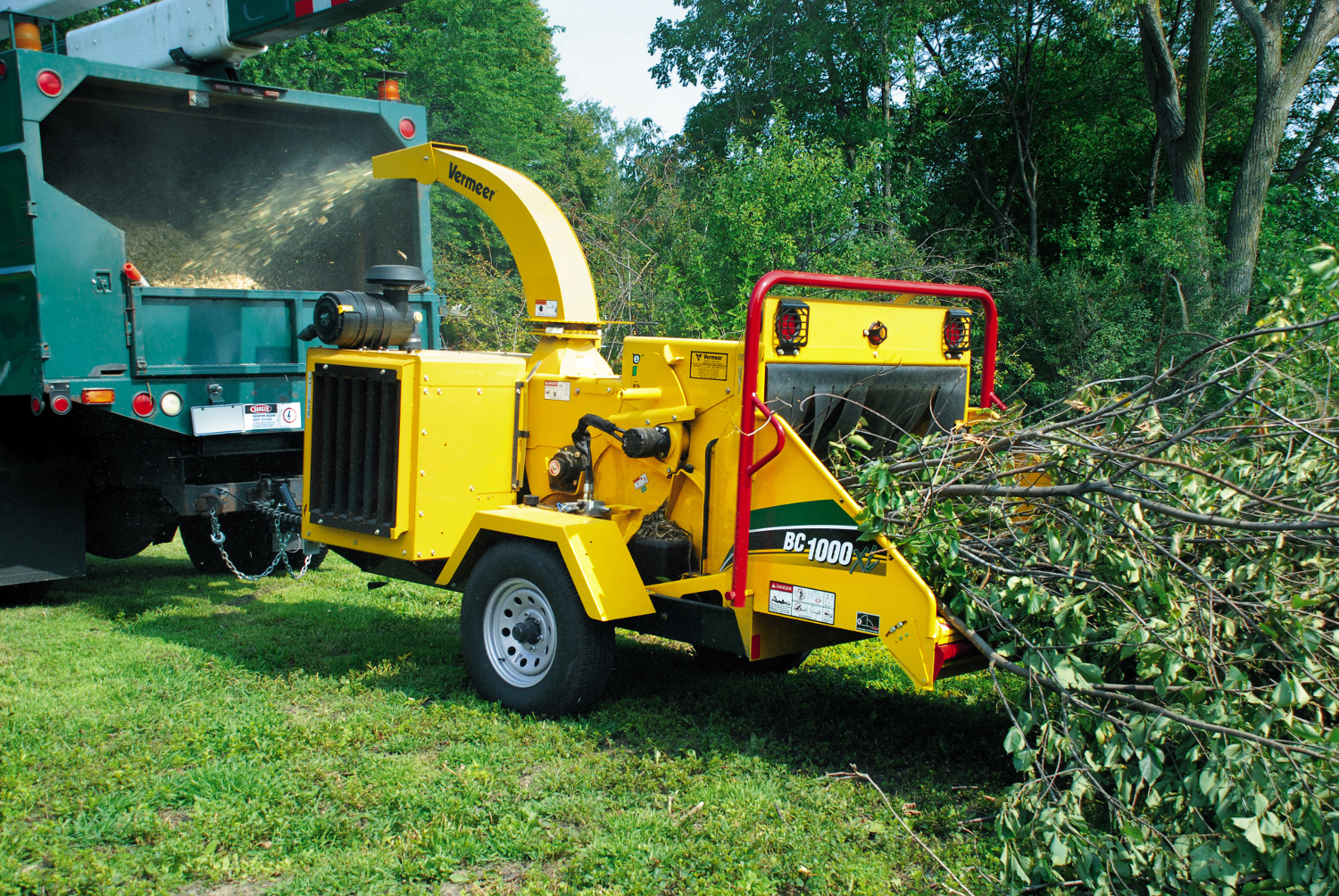In the past few years, the basics of how a brush chipper works have not changed much.
But that doesn’t mean there haven’t been innovations in the design of a machine that is vital to many tree care contractors and municipalities.
“The meat and potatoes of a chipper really hasn’t changed a whole lot,” says Todd Roorda, tree care and rental sales manager for Vermeer. “It’s a lot of the ancillary features that have really changed on the chipper in the past 18 months.”
Here are some of the recent innovations on the brush chippers Roorda knows best — the ones manufactured by Vermeer.
Machine-fed
Feeding brush chippers by machine rather than manually has been growing in popularity. It’s easy to see why. Having a machine like a compact utility loader haul tree limbs and trunks to a brush chipper and then load the material into the infeed chute is a more efficient and less labor-intensive process than having crew members do that work.
The Tree Commander™ remote control from Vermeer helps make machine feeding more convenient. The remote control can be attached to an operator’s belt or mounted to the operator’s station of a Vermeer mini skid steer.
An operator can use the Tree Commander remote control to control the infeed rollers, including restarting the rollers if the chipper’s feed stop bar is accidentally tripped. The remote control also can reset the EcoIdle™ engine control system, which we’ll talk about shortly.
“Being able to machine feed a brush chipper controlled with a remote control could help a crew operate more efficiently and productively,” Roorda says. “You’re reducing those trips back and forth between the wood waste and the chipper.”
EcoIdle system
The EcoIdle engine control system by Vermeer will automatically lower engine speed if no material has been chipped for either one minute or five minutes, depending on the operator’s selection. The advantages of this are twofold.
First, it reduces sound, which benefits not just crew members but also the surrounding neighborhood.
Second, reducing engine idling can lead to fuel savings. Fuel is a significant expense for just about every tree care company and municipality, and any savings adds up.
“While a crew is getting more material to feed into the chipper, there’s really no need for a brush chipper to be running at a high rpm burning fuel,” Roorda says.
Engines and displays
Modern electronic fuel-injection engines and governmental emissions requirements also are improving the fuel economy of brush chippers. Engine advancements have also increased the amount of information available to an operator on a display, including tachometer, hour meter, oil pressure, water temperature and engine error codes.
“There are far more things on the display now than there ever used to be,” Roorda says.
Future
Roorda says Vermeer will continue to push the envelope to give customers the best equipment the company can. Representatives from Vermeer and its dealer network constantly talk with customers about their needs, and Vermeer engineers explore solutions.
“The market continually changes, and we like to be on the forefront of those changes,” he says.
